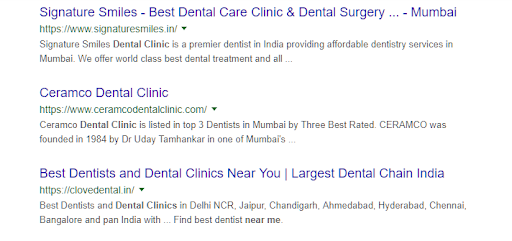Before I started working for a B2B content marketing agency, I thought good writing was all it took to rank articles on Google’s first page of search results.
I used to think SEO and PPC are pointless mumbo-jumbo thrown around by the SEO team to confound their bosses and ensure they aren’t deemed surplus to requirements.
All I knew about SEO (Search Engine Optimization) was that it is the process of making your content rank at the top of Google’s search results. And that PPC (Pay-per-click) is an advertising model where you pay for every time someone clicks on your promoted content or online ads.
When I started my career in B2B content marketing, I found out that they were exactly what I thought they would be — minus the pointless-mumbo jumbo bit.
Turned out, SEO and PPC are, in fact, among the most important aspects of content marketing, secondary only to the quality of the content you put out.
Search engine optimization and pay-per-click advertising are two sides of the same content marketing coin. They are different ways to achieve the same objective — delivering your content to the right target audience.
So, how do they differ?
SEO is organic, PPC isn’t
It’s as simple as that. SEO is the process of making Google determine that your article is relevant to a user’s search query by crafting your content in a specific manner. PPC is your way of essentially paying Google to show users your web pages at the top of SERPs when a user searches for the chosen keywords. You are billed by Google every time someone clicks on the ad. You can differentiate the two on the search results page by looking for the small green box labeled ‘Ad’ for PPC Ads, as highlighted in the below image for the search phrase ‘dentist near me’. They always appear above the fold on the search results page.
SEO blogs come without the ‘Ad’ label and are listed after the PPC ones.

Here’s another example.
You can choose to follow the Google SEO guidelines to drive organic traffic to your pages or pay Google to display your pages at the top of the search results. So, which one’s the better option? Well, it depends.
When to use SEO and PPC
SEO requires a fixed periodic investment but can build greater traffic and online authority in the long run. You can even boost your SEO ranking for free by creating SEO-optimized content. However, it can be hard to get your content and website to rank at the top of SERPs early in your campaign. Just like anything that’s organic, SEO-driven growth can be slow. Thus, it is key to be patient with SEO-driven content marketing. However, in the long term, SEO can deliver significantly greater ROI than PPC. And the best part is that once started, SEO can continue to drive greater traffic to your site without you having to do anything.
PPC ad campaigns, if done right, can lead to instant increase in the right kind of traffic to your site. You can finely tune your ads to display them to specific people in specific locations and at specific times. This, if you have enough information on your target audience, can lead to highly effective marketing campaigns and instantly drive massive traffic to your site. Since PPC ads are displayed above the fold on top of SERPs, they are at least viewed by a lot of people, if not clicked by them. This makes PPC a great tool for spreading brand awareness.
Depending on whether you want instant popularity or sustainable marketing, you can choose between SEO and PPC ads. You can also choose a hybrid approach by combining the two. What matters the most is doing either of these the right way — the way B2B content marketing agencies like Spacebar have been doing to get their clients to the top of SERPs consistently. If you want your business to join the rest on the first page of Google search, you can get in touch with Spacebar to learn how.






